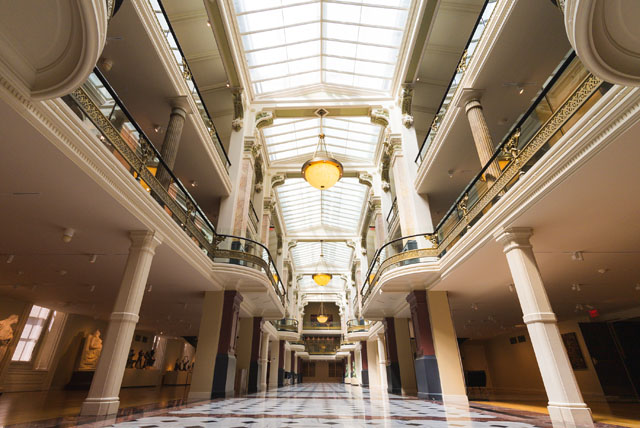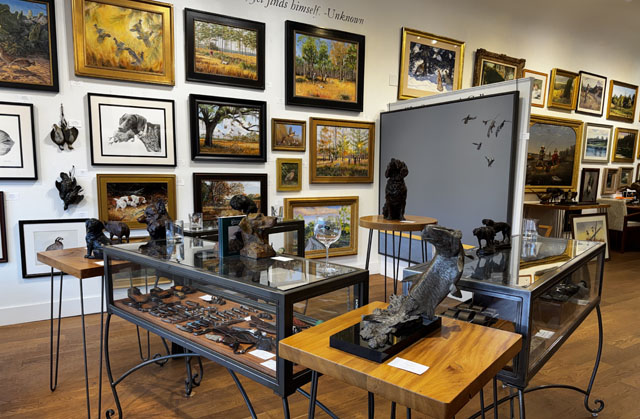‘Softie’ Season
05 Mar 2024
Crabbers work around the clock to pull in limited-run softshell crabs
By Barry Waldman
Photos provided by Dave Richardson

In a good soft-shell crab season, crabber David Richardson can pull 15,000 “peeler crabs” out of the water in three days. Those peelers are female Atlantic blue crabs destined for two major life changes—first as they molt out of their hard shells in the coming days and then as they transition to lunch for hungry humans feasting on “soft-shell” crab, which comes around just once a year, for about two weeks, in the spring.
The sweet, delicate flavor of “softies” is a milder version of blue crab taken from the shell. Richardson calls it “all the good with none of the bad” because it can be eaten nearly whole without extracting it from a shell.
“Blue crab meat is some of the sweetest stuff the good Lord put on this Earth. Salty, sweet, crunchy, and don’t need no seasoning,” Richardson said.
It had better be, because soft-shell crab is a bear to harvest. Blue crabs molt at specific but unpredictable times and become so vulnerable to predators and rough handling once they do, that soft-shell hunting is a painstaking business.
Because females about to molt seek out males for protection and reproduction, crabbers bait their special “peeler traps” with the most macho male blues to lure them in.
Once the day’s catch is done, Richardson takes his catch down to his parents’ shed on the Wando dock where they are placed in shallow salt water on tables and watched like hawks around the clock for signs of molting. Blue crabs molt with lightning speed, so they must be monitored or they will quickly fail the soft-shell exam.
According to the South Carolina Department of Natural Resources, molting lasts for only a few minutes as the crab pushes out the rear of the old shell.
Richardson says once their shells crack, workers have up to three hours to get them into wet, hay-filled boxes and refrigerated before being shipped to area restaurants or sold at Richardson’s parents’ fish market, Marvin’s Seafood in North Charleston. Experts suggest anyone buying softies at a market cook them up that day or the next, as they won’t last much longer in their fraught state.
“It’s a whole process, 24 hours-a-day for about a 30-day season,” Richardson said. “They’re a difficult critter to figure out and not everyone has the gear to do it.”
A bevy of special peeler traps are required, which Richardson estimates cost $5,000 or $6,000 total. Add the attention to detail and the learning curve, and most crabbers don’t bother with them.
Now you know why you pay so much for a soft-shell crab sandwich at your favorite seafood joint. The fisherman gets a buck or two per crab; the wholesalers mark them up to $5.50-$7.00, and once it gets on a bun you could be paying $20, though the accompanying garnishes account for a bit of that.
The University of Florida found a pound of blue crab yields about 2 ¼ ounces of meat, which the yields 53 calories, 15 grams of protein and barely a gram of fat, with a side helping of calcium, phosphorus, zinc, copper, iron and potassium. No sugar, no carbs, no ingredients you can’t pronounce. And other than the eyes, gills and abdominal armor, the entire animal can go on the plate.
If 15,000 harvested crabs sounds unsustainable, it’s actually just a drop in the ocean. Blue crabs lay millions of eggs, and though only a handful survive from all that roe, it’s enough to keep the small number of soft-shell crabbers from overfishing in these parts. The same can’t be said for fisheries elsewhere, particularly in the Chesapeake Bay, where environmental pressures have depressed yields and threatened the blue crab population.
Locally-caught “softies” show up in Lowcountry cuisine mostly during the late spring and summer, best enjoyed sauteed, grilled, pan-seared or fried. Popular preparations are generally part of an appetizer, lunch or dinner, cooked in lemon juice, dusted in cornmeal and fried, sauteed and coated in tartar sauce, or just dropped on a bun with lettuce, bacon and tomato in a soft shell crab BLT. It’s as iconic to the Lowcountry as shrimp and grits, except with a shorter season.
Soft-shell crabs are a telltale sign of spring too, as true as Confederate jasmine, azaleas, the Cooper River Bridge Run and the RiverDogs. But they’re the most delicious. Find them at popular Charleston-area seafood restaurants this season (generally late April) and on restaurant specials boards throughout the season.












